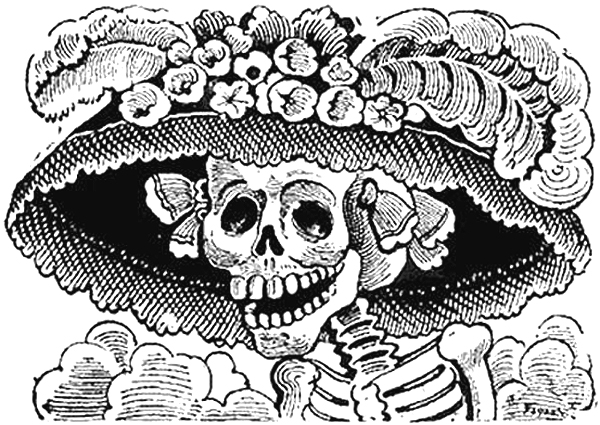Source: WTL research files.
Comments: This female skeletal figure is known throughout Mexico as la Catrina (the "lady dandy"). Etching by José Guadalupe Posada, la Calavera Catrina (1913). The figure is emblematic of the art of Mexico in general and, more specifically, of the Day of the Dead (Día de los Muertos or Día de Difuntos); that is November 2nd. In Latin America and some other countries with prominent Catholic populations, it is a religious holiday where family pray for and have celebratory meals or parties for deceased family members. November 1st is All Saints' Day (Todos los Santos) and the following day, in English, is All Souls' Day. In Mexico, as Posada's emblematic image above suggests, people construct elaborate private altars with flowers, food, drinks, sugar candies in the form of skulls, and they visit the cemeteries where their family members are buried. Halloween (All Hallows Even or Evening) in English-speaking countries is related, but, generally speaking the traditions are celebrated in somewhat different ways. In Mexico, the Catholic Church fused the Día de los Muertos with a pre-Columbian festival in which the Aztec goddess Mictecacíhuatl (Aztec goddess who ruled over the Aztec underworld with her twin god, her husband, Mictlantecutli) was honored. This kind of religious and cultural holiday is fairly universal throughout the world's diverse cultures.
Bibliography for Mexico: Elizabeth Carmichael and Chloë Sayer, The Skeleton at the Feast; the Day of the Dead in Mexico. Austin, Texas: University of Texas Press, 1991.
Example of Candy Sugar Skulls from Toluca, Mexico:

